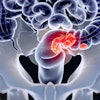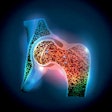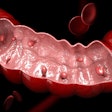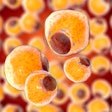Wednesday, December 3 | 3:30 p.m.-3:40 p.m. | SSM25-04 | Room E450B
In this study, researchers from the Ochsner Clinic found that the soft lipid component of carotid plaque is an important predictor of stroke risk in patients with carotid stenosis.Data continue to suggest that carotid plaque morphology and composition, in addition to stenosis, may help identify patients at risk for stroke. Specifically, the lipid component of carotid plaque has been associated with an increased risk of plaque rupture and embolization, said senior author Dr. Hernan Bazan.
"The concept of 'vulnerable plaque' is well-established and has been extensively studied using ultrasound and MRI, but less so using CT," Bazan said. "CT angiography [CTA] is cost-effective and routinely performed prior to carotid endarterectomy, but analysis of carotid plaque is not a part of clinical practice since there is only limited evidence to suggest that carotid plaque features on CTA correlate with clinical symptoms and plaque histology."
Making use of their institution's carotid biobank that contains more than 160 samples, the researchers used Aquarius advanced visualization software (TeraRecon) to perform plaque analysis on preoperative CT angiography images for both urgent and asymptomatic carotid endarterectomy patients from 2009 to 2013. After quantifying the soft lipid component of carotid plaque in both groups of patients, the researchers determined it was an important predictor of stroke risk in patients with carotid stenosis.
Increased soft atheroma content correlated clinically with acute and symptomatic presentations (i.e., transient ischemic attack and/or stroke), according to Bazan.
"Analysis of carotid plaque morphology can have significant implications for the selection of patients who would benefit from carotid revascularization and has the potential to change the current clinical practice of relying purely on neurological symptoms and luminal narrowing," he told AuntMinnie.com. "The morphologic features of carotid plaque such as lipid content and intraplaque hemorrhage can provide important diagnostic information regarding plaque vulnerability. Identifying vulnerable plaque in patients before they become acutely symptomatic will greatly improve outcomes in patients who undergo carotid endarterectomy and reduce the overall risk of stroke in patients with carotid atherosclerotic disease. "
Learn more in this Wednesday afternoon talk, which will be given by Dr. Joseph Luka.




















